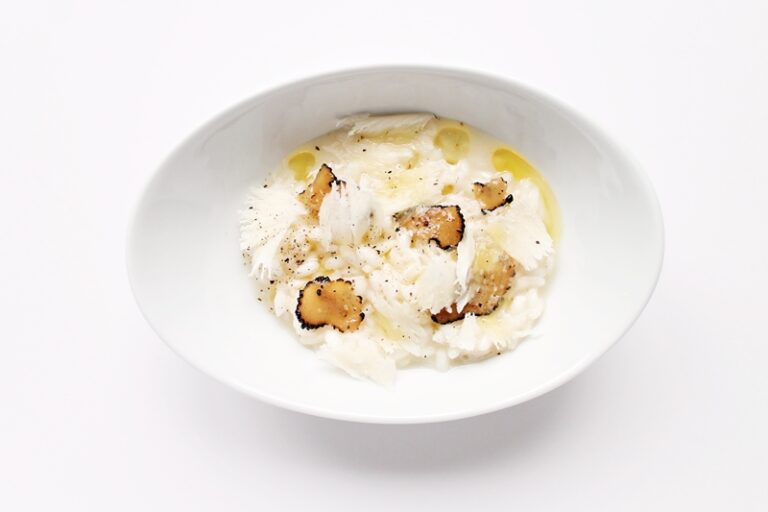Richard reflects in a chronicle on What Happened to Slow Food? [read the full champagne story]
Estimated reading time: 8 minutes

As a bon vivant and gourmet, I sadly ask myself, what happened to those wonderful long meals where we enjoyed ourselves and socialized for hours? The very word meal (måltid) implies both the “goal” — the food to be eaten — and the time we dedicate to this delightful activity. It’s fair to assume that it’s not just what you eat that’s important, but also how much time you devote to this vital activity. All animals need sustenance for survival, and sadly, as we all know, far too many people live on the bare minimum and can never see food as a pleasure; instead, they must hunt every calorie to survive another day on the planet. In our privileged part of the world, overconsumption is a greater problem than starvation, and the hunt for calories is reversed: how do you keep calorie intake down, and how do you burn what you’ve consumed?
I find it interesting to reflect for a moment on the fact that less than 150 years ago, we in the Nordics were fighting against starvation and poverty. This still shows in the consumption patterns of our oldest living individuals and in the traditional Nordic dishes we feast on during holidays. Food needed to be fatty and energy-rich, with preservation methods that could keep food through our merciless winter. Just think of the great feast at Katthult, where Emil [the hero of childhood ‘Emil I Lönneberga’ by Astrid Lindgren] acted as “Småland’s Robin Hood” and ensured the poor could fill their bellies until they burst.
Researchers believe it would be perfectly fine to replace regular food with pills and water without our bodies lacking anything essential. And when you see stressed city dwellers half-running with a phone in one hand, discussing their next project while quickly chewing on a “Take Away” on their way to the next meeting, perhaps that would be preferable.
Because, of course, the health perspective is important
“You are what you eat” might be taking it a bit too far, but if you look at the largest studies of the world’s centenarians, food seems to play an important role. What’s less known is that almost all long-livers only eat when they’re hungry and only eat three times a day at set times. The most crucial common denominator was that they never rushed and instead took their time, enjoying both the food and the company around the table.
Slow Food movement
People in Mediterranean countries have always been good at both enjoying food and taking their time. So it was hardly a coincidence that an Italian started the Slow Food movement in 1986 as a counter-reaction to the fast-food trend. Fast food isn’t just unhealthy; eating too quickly is also unhealthy.
We live in a “fragmented” TikTok world where our attention span is extremely short, and the ability to take our time, maintain concentration, and focus is constantly deteriorating. So it’s perhaps not so strange that so many rush through dinner. At our home, we also have such varied activity schedules that, at best, it’s only a couple of days a week that we sit together for a while at the same table before someone gets up and leaves. A terrible development that I’m ashamed of! We used to have Sunday dinners a couple of times a month at my parents’ house, where we calmly discussed the week’s exploits over a classic pot roast or a stew that Mom had carefully cooked for hours.
Champagne Hiking
I’m even more ashamed because, in my profession, I so often emphasize the importance of focus and time to optimize wine enjoyment. This is most evident in the concept I created called Champagne Hiking. This is the delightful activity where you find a fantastic favorite spot in nature and bring the champagne best suited to enjoy in that specific place, with that company, and at that time. It’s a contemplative pleasure where you slowly take in nature’s nuances and the wine’s beautiful journey in the glass for hours, with total focus and simultaneously relaxed, maximum enjoyment.
Because if we look at it from a broader perspective, it’s the interplay of a myriad of factors that cooperate when trying to maximize enjoyment. All our senses work together when we enjoy. Factors like place, company, and state of mind will always affect our overall experience of a cultural spectacle or a pleasure. In the theater or concert hall, this has long been a given, but in the wine world, this way of thinking is entirely new.
The Restaurant Experience – From Perfection to Frustration
The restaurant world, on the other hand, almost entirely bases its raison d’être on refining various factors surrounding the food to make guests flock to gastronomic temples, regardless of the style or level the restaurant wishes to represent. It starts with the restaurant’s location, entrance, and view from the table. Interior design, lighting, table setting, china, wine glasses, the wine list, menus, atmosphere, other guests, the food of course, but almost as important is the staff’s demeanor.
500 Michelin-starred restaurants
Here, we are all different. I know many who are simply uncomfortable being escorted to the restroom or having the wine list illuminated by the waiter’s small flashlight. Personally, I love to be pampered and spoiled when I go out. I want to be treated with care and respect, just as the staff has the right to demand that a guest respects the restaurant’s efforts and gives full attention to the details that provide greater enjoyment for both parties. Giving and taking, in the same way as between the artist and their audience in the theater or during a concert. If you, like me, have visited almost 500 Michelin-starred restaurants, you know that the greatest experiences can look completely different. Everything from a tiny hole in the wall to castle-like venues with majestic panoramic views. The food can be classic with a French foundation, rustic Italian, sensationally technically acrobatic molecular, or minimalist Japanese, or cool and locally sourced Nordic. Sometimes I want to be surprised; other times, it’s comforting, familiar flavors that bring satisfaction. Generally speaking, I must say that the standard of top restaurants is getting higher and higher, and the number of fine dining establishments in various styles is increasing, not least in Sweden.
With this in mind, it’s all the more peculiar that even in the finest gourmet oases, a giant abomination has crept in, and it’s primarily in the Nordics that this idiocy started and quickly took hold, like a tick carrying Lyme disease.
Have you figured out what I’m getting at by now? Have you grasped the root of my anger and the reason I’m writing this article? I’m sure many of you have also encountered this novelty and know exactly what has irritated me.
Time slots in restaurants?!
Restaurants have introduced time slots and are driving away their stressed guests before they’ve even finished chewing their food! The first time I experienced this was at a renowned Michelin-starred restaurant in Copenhagen, and I couldn’t believe my ears when they wanted us to leave the premises with a half-full bottle of our Léoville-Las-Cases before dessert had even been served. Nowadays, approximately half of Sweden’s Michelin-starred restaurants have also abandoned the simply brilliant setup of lunch and dinner service with flexibility, where lunch can easily transition into dinner for those who wish. I fully understand that there are certain logistical hurdles, especially when seating is limited and two sittings are needed for profitability. But good heavens, if you’re a Michelin-starred restaurant, you should raise your prices if you can’t make ends meet without kicking out your guests. Even our most exclusive food temple, Frantzén, has time limits, but they manage it so smoothly that it doesn’t feel rushed. They move people between different rooms, allowing new souls to enter and partake in the spectacle.
The worst experience so far …
The worst experience so far was my latest visit to the charming Japanese “hole in the wall,” Dashi on Rådmansgatan in Stockholm. After two hours at the table, it was thank you and goodbye. Very good food, knowledgeable and friendly staff, and an enormously high level of ambition throughout, but when the same girl who had just grilled asparagus five meters from our table started washing dishes with lemon dish soap, spreading a clean but hardly food-compatible odor, while the waiter told us we wouldn’t have time for our final course and had to hurry to finish our glasses – then you don’t deserve any Michelin stars! Fortunately, they welcomed us with open arms across the street at Adam & Albin, and we stayed there until the early hours without any yellow warning cards or red expulsion notices being issued. Please, gastronomic Nordic elite. Reconsider and think straight. Spend a little less time presenting the name of the cow whose milk we’re sipping, and give us peace and quiet. A meal under time pressure can never be a good meal, no matter how good the food is.

Stockholm – 9th of June’25
Richard Juhlin





